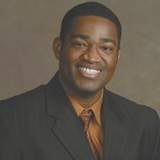By Ahimsa Porter Sumchai
OPINION
Senate Bill 1262 was introduced in the California Senate on Feb. 21 by veteran legislator Lou Correa. It is a medical marijuana bill designed to regulate physicians, dispensaries, and cultivation sites via rigid government oversight. Sponsored by the California Police Chiefs Association, SB 1262 promises to “provide a clear road map for the responsible implementation of Proposition 215 in California since voters approved it in 1996.”
The Compassionate Use Act of 1996, which created Heath & Safety Code 11362.5, ensures that seriously ill Californians have the right to obtain and use marijuana for medical purposes when the use is deemed appropriate and recommended by a physician.
As a licensed physician with a registered medical practice in San Francisco, I have reviewed the wording of SB 1262. The bill is highly punitive, clearly seeking to punish doctors who recommend medical marijuana (MM). SB 1262 concerns me most because it duplicates and violates existing state and federal statutes that clarify the physicians’ role in recommending MM.
In the 2002 case Conant v. McCaffrey, the federal government was enjoined by the US District Court in San Francisco from punishing physicians for recommending MM. That ruling affirms physicians’ First Amendment right to make recommendations.
SB 1262 requires the Medical Board of California to audit any physician who recommends MM more than 100 times a year. On April 2, the US Supreme Court struck down limits on federal campaign donations under the auspices of First Amendment free speech rights. Thus, a SCOTUS precedent was set that can be legally interpreted to defend a physician’s free speech right to authorize as many patients to use MM as deemed medically necessary.
SB 1262 establishes requirements for prescribing and record-keeping for physicians who recommend MM in a bill sponsored by law enforcement officials who lack medical or relevant education training. Guidelines and accepted standards for recommending MM were developed by licensed California physicians and adopted by the MBC on May 7, 2004.
SB 1262 violates the California law that protects the privacy of patient medical information — The Confidentiality of Medical Information Act — as well as federal law protecting health information, by mandating physicians report all MM recommendations along with private patient records. The Health Insurance Portability and Accountability Act (HIPAA) requires patient authorization for disclosure of patient health information. HIPAA is a federal regulation, and MBC has no authority to evaluate HIPAA violations.
SB 1262 mandates a training and certification requirement for any doctor who recommends MM, with a $5,000 fine for noncompliance. I support SB 1262’s efforts to establish standards for quality assurance and testing of marijuana cultivated for medical use, but even that section duplicates guidelines developed and adopted by the Attorney General’s Office in 2008.
Physicians are capable of regulating their practice standards without law enforcement oversight and SB 1262 is opposed by the California Medical Association, which issued guidelines for physicians recommending MM in 2004, which includes proper record-keeping and annual examinations.
“Medical marijuana evaluation clinics are engaged in the practice of medicine, and physicians are responsible for their patients,” that 20-page Digest for Medical Marijuana Clinics affirms.
Marijuana remains listed in Schedule 1 of the federal Controlled Substances Act and has no accepted medical use. The lack of dose response curve research conducted in large population-controlled trials coupled with the lack of standardized cannabinoid profiling, potency, pesticide, and microbiological testing make it difficult for the physician to offer dosing recommendations for MM short of the adage “start low, go slow.”
The American Public Health Association, American Academy of HIV Medicine, and many other medical institutions join Americans for Safe Access — the largest member-based marijuana advocacy organization in the country — in promoting safe and legal access to MM for therapeutic uses and research. Polling shows Americans of all political stripes support medical marijuana, and SB 1262 would be a step backward that the public doesn’t want to take.
Ahimsa Porter Sumchai is a physician and former District 10 supervisorial candidate.

